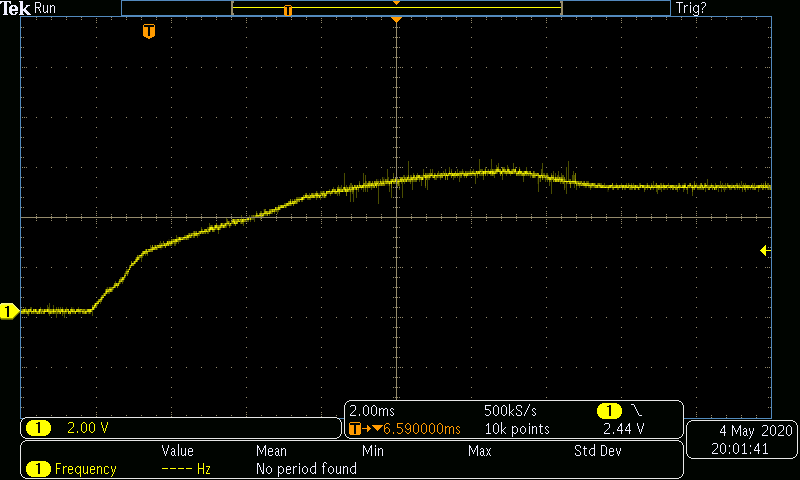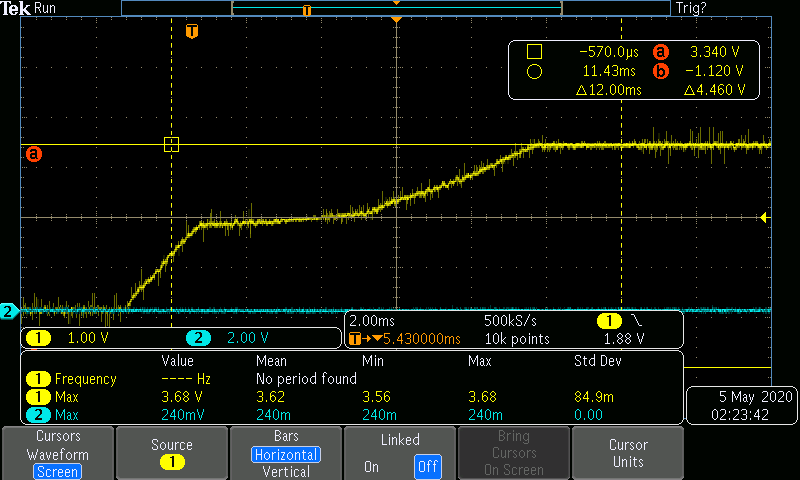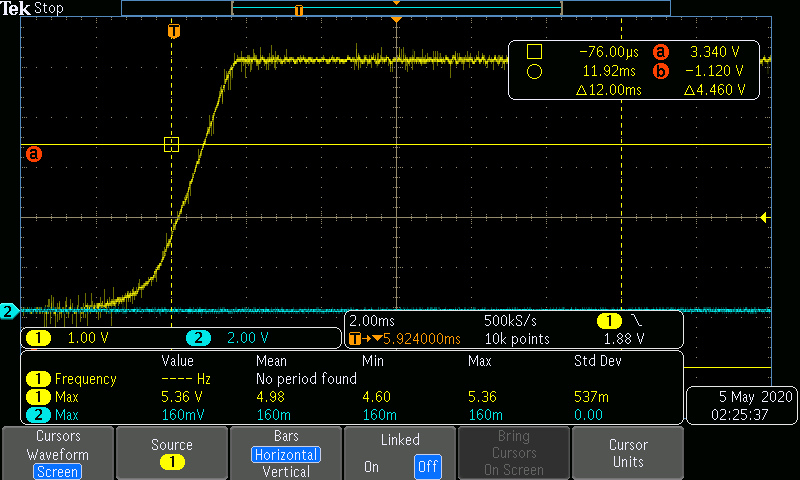Other Parts Discussed in Thread: DCR011203
I am using several DCR01 regulators in one of my designs. There are two sets of 3, one DCR011203 and two DCR011205s. Both sets have completely independent loads. They have sync pins tied together within a set, but not between sets. All regulators use recommended capacitance and resistance values.
I'm noticing significant overshoot from all regulators, generally ~1V. A screen capture is attached for reference. This is unacceptable for my design, as many of the 5V components have an absolute max of 6V, and some of the 3.3V components have an absolute max of 4V. Are there any established methods for soft starting this regulator? It doesn't have an SS pin, so this isn't going to be as simple as adding or changing a capacitor.
I'm not certain because of the hybrid nature of this part, but since the output stage is an LDO is the method highlighted in the attached PDF a usable one here? Is something else preferred?
 1616.Soft-Start Circuits for LDO Linear Regulators_slyt096[1].pdf
1616.Soft-Start Circuits for LDO Linear Regulators_slyt096[1].pdf



